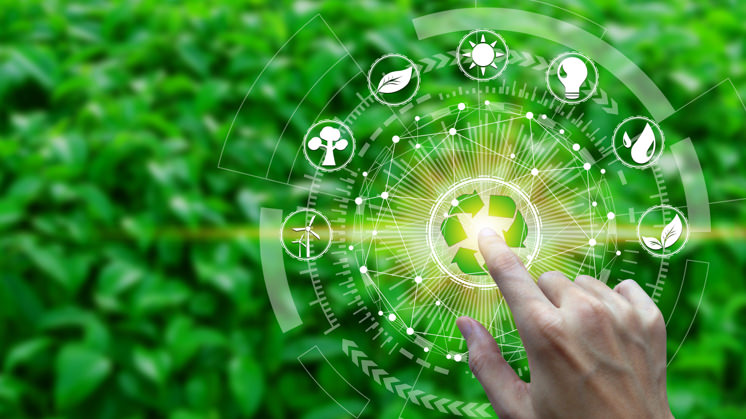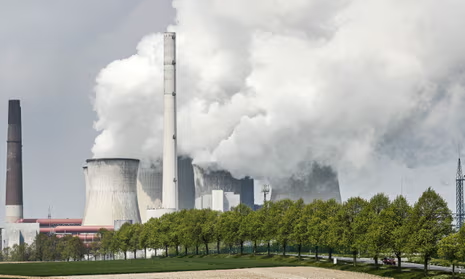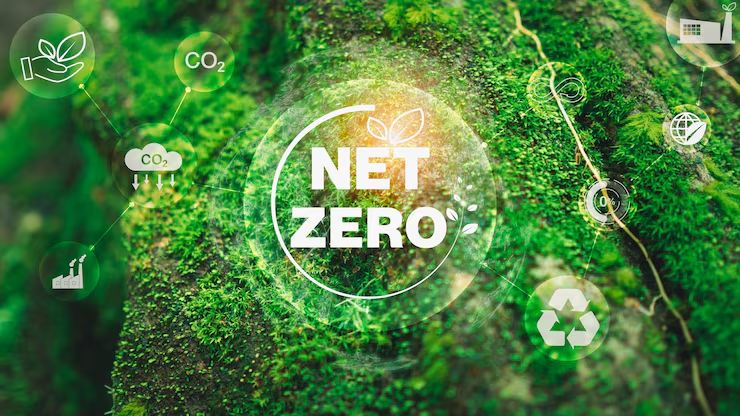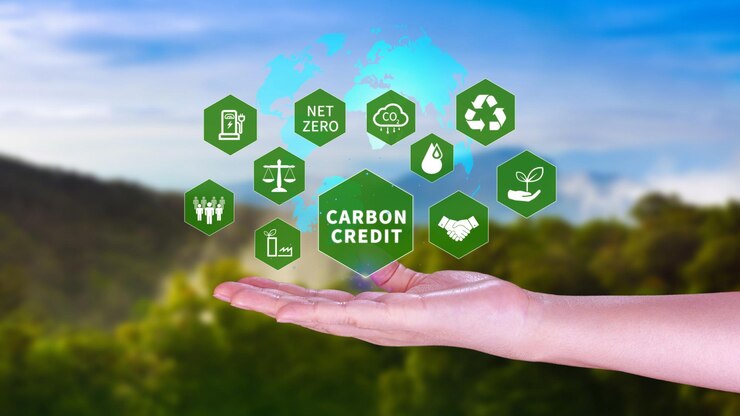Greening Effects of CO2 Emissions Hitting a Ceiling
Why the Greening Effects of CO2 Emissions Are Hitting a Ceiling

As the global community grapples with the urgent need to mitigate climate change, the role of carbon dioxide (CO2) emissions in greening the planet has long been a topic of discussion. However, recent research suggests that these greening effects may be reaching a ceiling, unveiling the complexities of this process.
While it is true that plants use CO2 for photosynthesis, promoting growth and potentially increasing biomass, it is crucial to understand the intricate balance of other factors involved. Rising temperatures, nutrient availability, and water scarcity can all limit the positive effects of elevated CO2 levels on plant growth.
This article delves into the science behind the greening effects of CO2 emissions, examining the limitations and challenges faced in achieving sustainable greening outcomes. By uncovering the underlying complexities, it aims to provide a more nuanced understanding of the interplay between CO2 emissions, plant response, and their impact on the environment.
Join us as we dissect the latest research and shed light on the intricate relationship between CO2 emissions, greening, and the challenges we must overcome to foster a truly sustainable future.
Understanding the complexities of CO2 emissions and the environment
Carbon dioxide (CO2) emissions have long been recognized as a significant contributor to climate change. However, the impact of these emissions on the environment is not solely negative. In fact, CO2 has been known to have a greening effect on the planet. The idea behind this greening effect is that elevated CO2 levels can stimulate plant growth through increased photosynthesis. This has led some to believe that CO2 emissions might be beneficial for the environment. However, recent research is shedding light on the complexities of this process, suggesting that these greening effects are reaching a ceiling.
The concept of the greening effects and its limitations
The concept of the greening effect is rooted in the fundamental process of photosynthesis. Plants use CO2, along with sunlight and water, to produce energy in the form of carbohydrates. As CO2 levels increase, plants are able to uptake more CO2, leading to enhanced photosynthesis and potentially increased biomass. This has been observed in various ecosystems around the world, with studies showing an increase in vegetation cover in response to rising CO2 levels.
However, it is important to note that the greening effects of CO2 emissions are not universal. While some areas experience increased vegetation growth, others may not show the same response. This can be attributed to several factors, including temperature, nutrient availability, and water scarcity. Rising temperatures, for example, can offset the positive effects of elevated CO2 levels by accelerating plant respiration, which can lead to a decrease in net photosynthesis. Similarly, nutrient availability and water scarcity can limit the growth potential of plants, even with increased CO2 levels.
Factors contributing to the ceiling of greening effects

The ceiling of greening effects refers to the point at which the positive impacts of elevated CO2 levels on plant growth begin to plateau. Several factors contribute to this ceiling effect, with the most significant being nutrient availability. While CO2 can enhance photosynthesis, plants require other essential nutrients, such as nitrogen and phosphorus, to support their growth. If these nutrients are not readily available in the soil, the potential for increased growth due to elevated CO2 levels is limited.
Additionally, water scarcity can also play a role in restricting the greening effects of CO2 emissions. In some regions, increased CO2 levels can lead to a decrease in plant water use, known as stomatal conductance. While this can be beneficial in conserving water, it can also limit the amount of CO2 that plants can uptake, thus reducing the potential for increased growth.
Furthermore, the interplay between CO2 levels and other environmental factors, such as temperature and light availability, can also influence the ceiling of greening effects. Rising temperatures, as mentioned earlier, can offset the positive impacts of elevated CO2 levels, while changes in light availability can affect plant growth and photosynthesis rates.
Impacts of CO2 emissions on ecosystems and biodiversity
While the greening effects of CO2 emissions may seem beneficial on the surface, it is important to consider the broader impacts on ecosystems and biodiversity. Changes in vegetation cover can have cascading effects on other species that rely on these ecosystems for survival. For example, alterations in plant communities can affect herbivores that depend on specific types of vegetation for food. Similarly, changes in vegetation structure can impact the habitat suitability for various animal species, potentially leading to shifts in biodiversity patterns.
Moreover, the greening effects of CO2 emissions can also influence carbon cycling and the global carbon balance. Increased vegetation growth may result in higher carbon sequestration rates, potentially mitigating the effects of CO2 emissions on climate change. However, the long-term fate of this additional carbon is uncertain, as it can be released back into the atmosphere through processes such as decomposition and wildfires. Therefore, understanding the complex interactions between CO2 emissions, plant response, and ecosystem dynamics is crucial in assessing the overall impacts on biodiversity and the environment.
The role of feedback loops and tipping points
In addition to the limitations mentioned earlier, another important aspect to consider is the potential for feedback loops and tipping points. Feedback loops occur when the effects of a process reinforce or amplify its initial cause. In the context of CO2 emissions and the greening effect, feedback loops can arise through various mechanisms. For example, increased plant growth due to elevated CO2 levels can lead to changes in the water cycle, such as increased evapotranspiration. This, in turn, can affect regional rainfall patterns, potentially altering the availability of water for both plants and other organisms.
Tipping points, on the other hand, represent critical thresholds beyond which a system undergoes abrupt and often irreversible changes. In the context of the greening effects of CO2 emissions, tipping points can occur when the positive impacts of elevated CO2 levels on plant growth are outweighed by negative feedbacks or environmental constraints. Once a tipping point is reached, the greening effects may decline rapidly, leading to significant changes in ecosystems and their functioning.
Mitigation strategies to overcome the ceiling of greening effects
To address the ceiling of greening effects and ensure sustainable outcomes, several mitigation strategies can be employed. One approach is to focus on improving nutrient availability in ecosystems. This can be achieved through targeted fertilization or the use of organic matter to enhance soil nutrient content. By providing plants with the necessary nutrients, the potential for increased growth in response to elevated CO2 levels can be maximized.
Another strategy is to prioritize water management and conservation. Implementing efficient irrigation techniques and promoting water-saving practices can help ensure that plants have an adequate water supply, even in regions experiencing water scarcity. Additionally, enhancing water-use efficiency in plants through breeding or genetic engineering can further optimize the benefits of elevated CO2 levels on growth.
Furthermore, it is essential to address the root causes of CO2 emissions by implementing policies and practices that reduce greenhouse gas emissions. This includes transitioning to renewable energy sources, promoting energy efficiency, and adopting sustainable land-use practices. By reducing CO2 emissions, we can mitigate the overall impact on the environment and potentially alleviate some of the limitations of the greening effects.
Case studies and examples of the ceiling effect

To illustrate the concept of the ceiling effect and its implications, let's explore a few case studies. In the Amazon rainforest, researchers have found that while increased CO2 levels can enhance tree growth initially, nutrient limitations can prevent sustained growth over time. This highlights the importance of considering nutrient availability in understanding the full extent of the greening effects.
In agricultural systems, elevated CO2 levels have been shown to increase crop yields initially. However, without addressing nutrient limitations and water availability, the benefits may not be sustained in the long run. This emphasizes the need for integrated approaches that consider multiple factors to achieve sustainable outcomes.
Future prospects and challenges in addressing the ceiling effect
Looking ahead, addressing the ceiling effect of the greening effects of CO2 emissions presents several challenges. One key challenge is the need for interdisciplinary research and collaboration. Understanding the complex interactions between CO2 emissions, plant response, and ecosystem dynamics requires expertise from various fields, including ecology, climatology, and agronomy. By fostering collaboration, we can gain a more comprehensive understanding of the limitations and develop effective strategies to overcome them.
Another challenge is the need for long-term monitoring and assessment. The greening effects of CO2 emissions play out over extended periods, and it is crucial to track changes in vegetation cover, biodiversity, and ecosystem functioning over time. This will help us identify trends, detect potential tipping points, and assess the effectiveness of mitigation strategies.
Furthermore, addressing the ceiling effect requires a holistic approach that considers not only the environmental factors but also social and economic dimensions. Balancing the need for increased food production, sustainable land management, and climate change mitigation is a complex task that requires integrated solutions and policy frameworks.
Conclusion: Moving towards sustainable solutions for CO2 emissions
In conclusion, while the greening effects of CO2 emissions have provided some hope in mitigating the impacts of climate change, recent research suggests that these effects may be reaching a ceiling. Understanding the complexities of this relationship is crucial in developing sustainable solutions that consider the limitations and challenges involved.
By addressing factors such as nutrient availability, water scarcity, and the interplay between CO2 levels and other environmental factors, we can overcome the ceiling of greening effects. Through targeted mitigation strategies, interdisciplinary research, and long-term monitoring, we can foster a truly sustainable future that balances the benefits of CO2 emissions with the need to protect ecosystems and biodiversity.
Together, we can unravel the complexities of CO2 emissions, embrace the challenges, and pave the way for a greener and more sustainable planet.




